|
Below is an astrolocality map using whole sign houses and aspects. It was done with a popular astromapping program and edited with Photoshop. It removes the clutter of lines commonly displayed in astrocartography maps and gives a birds-eye view of how one's houses(or signs) and planets are spread across the globe. Whole sign astrology(whole houses and whole aspects) is the new trend in astrology but was actually practiced long ago in ancient Greece and Rome when horoscopy was in its infancy. 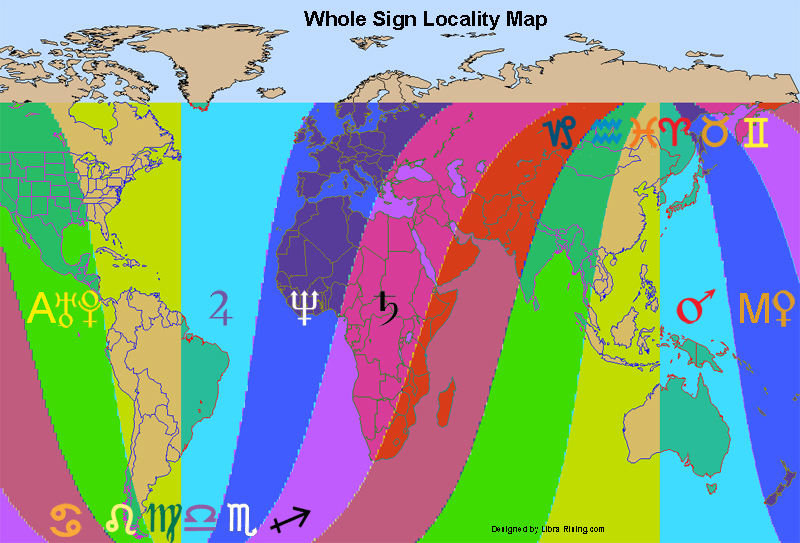 In the map above the signs or colored areas become the houses and the planets have no degrees. Degrees did not figure prominently in astrology until modern times. Aspects were by sign and did not have orbs. The Ascendant house/sign(marked by the letter A) designates the general birth area. Planets in the Ascending sign have the greatest influence on the native and his home region. To the left or right are the other colored bands(signs/houses) with their planets showing where on the Earth the rest of the chart plays out. Moving into these different areas will bring into focus or prominence that particular part of the individual's chart. M stands for the Midheaven which is here treated as a planet. If one wishes to be specific, the degree lines for the planets including the Ascendant and Midheaven, can then be inserted within the general framework as displayed below. Only whole sign exact aspects are used. Whole sign aspects are those that are separated by 30 degrees. Astrology, however, was not meant to be specific. It offers enough latitude or room for other factors to come into play, such as the astrology of nations or cities(mundane astrology), or the astrology of the Earth itself(geodetic astrology). They are all valid and overlapping influences which can be more easily perceived or understood when using whole sign astrology. 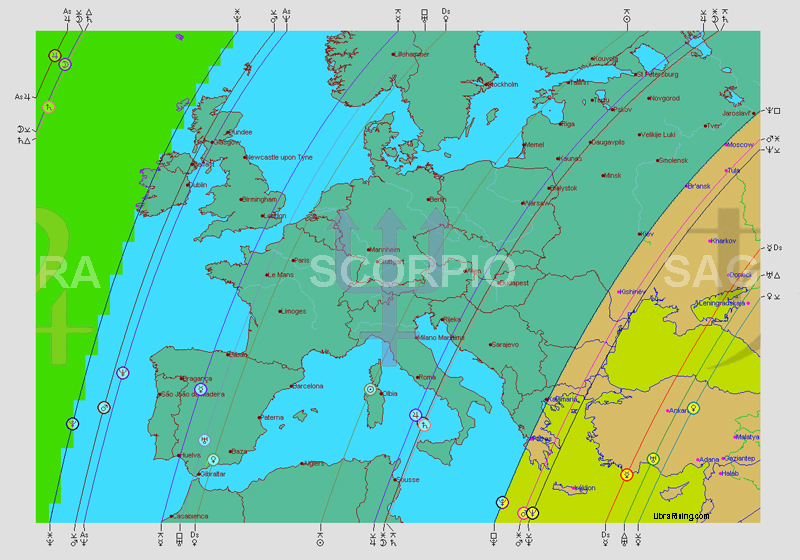 showing where your world Ascendants and Midheavens begin or end 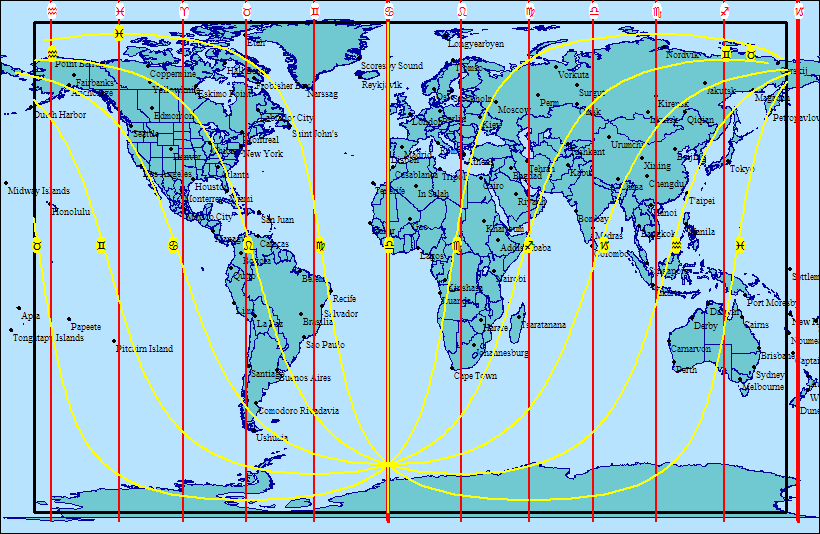 Ideally, whole sign Ascendant globes or modules could be created which would allow the rotation of the terrestial sphere inside the zodiacal one and which can quicky be aligned to one's latitude and longitude of birth. Such an apparatus would save an enormous amount of tedious calculation and give a complete and accurate three-dimensional view of one's locality chart at birth. Using the geodetic function of an astrolocality program to create natal reference Asc and MC lines(separately or combined) for any location is another great way to study one's locality chart. Programs like the excellent Janus makes this very easy and entertaining(Kepler is a little less flexible in this regard). In the set up one chooses the mode(geodetic signatures), the geodetic options(longitude, epoch year, step size, and direction), and the angle lines to be displayed. The line colors are also adjustable. Below are examples of this. 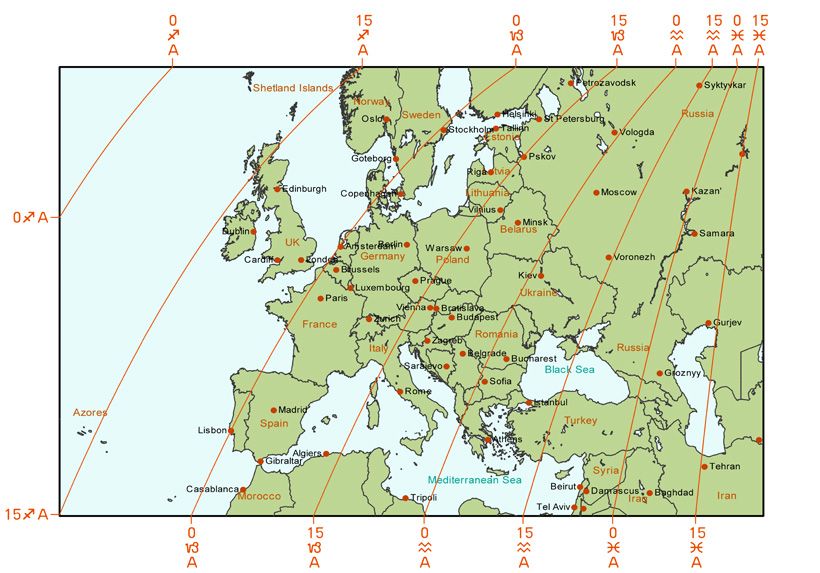 Until Janus 5, there were no jpeg or bitmap options(metafiles were used) which limited its copying and pasting potential, but the new Janus has corrected this. While the printouts in Janus 4 come out great, the saved files may appear narrow or squeezed in proportion. This can be corrected in Janus 5 by switching the image aspect ratio in the Map/Save Image box from 4x3 to 16.9. I find the Janus program to be the most reliable in terms of line or map accuracy. One has to simply memorize or make a list of one's natal placements to make full use of this function which is quite simple and aesthetic and gives a broader view of one's locality chart. Of course the simplest way to know the astrological equivalent of any particular latitude and/or longitude is to simply move the mouse cursor across the map and read off the Asc-MC degree and minute for that location. 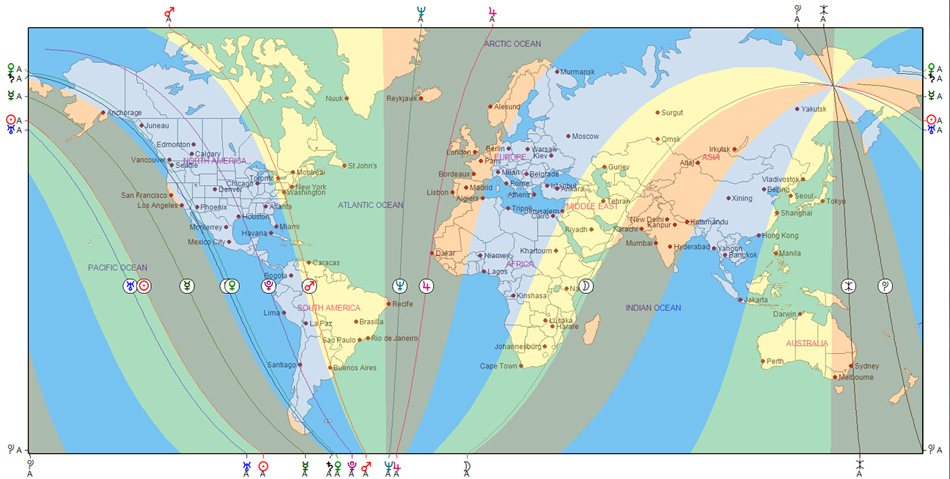 Also, clicking on a city and seeing its horoscope would be a nice next step for astrolocality programs. |